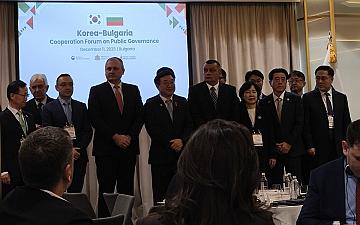Cyber-trafficking as a term covers instances where victims of human trafficking for sexual exploitation are trafficked or transported to so-called ‘cybersex dens’, where there are webcams and other electronic means that record and stream their exploitation.[i] As technologies advance and become intertwined in the daily life of most people, cybercrimes and exploitation are also on the rise.[ii] This creates a multitude of new risks, many of which especially dangerous for marginalised groups which often are more vulnerable.[iii] For instance, people who are economically disadvantaged or come from abusive backgrounds.
Human traffickers are turning to cyber-trafficking, as governments are becoming increasingly aware of their conduct and are more effective in stopping them. Criminals are beginning to prefer online means of conduct, due to the following factors:
- Cybercrimes provide a level of anonymisation, as criminals can mask their identity and location, this in turn makes it harder for authorities to track them down;[iv]
- Governments may often be staggering behind in relation to their technological capabilities and the level of expertise their professionals have on cyber-related issues;[v]
- Criminals can reach an unlimited number of potential clients that are also protected through the anonymity of the Internet;[vi]
- The spread of technology and the cheap prices of most devices, such as webcams, keyboards, etc. make it extremely accessible for criminals to engage in cyber-trafficking;[vii]
- More people spend most of their time online, which provides more opportunities for abuse by criminals.
- The Internet has also made it possible for criminals to gain access to potential victims. Through various chat systems or other methods of communications they create a bond with the victim, win their trust and then manipulate them into entering their sex trafficking rings.[viii] Once they enter, victims are often too scared to try to escape or seek help;[ix]
- Some criminals collect personal data and pictures of potential victims, they could enter the victim’s device without authorization and steal it or manipulate the victim into giving sensitive pictures for example. After this they would blackmail that victim into sending more and more provocative content which the criminal would use for profit;[x]
- In cases of children victims of cyber-trafficking, parents themselves may have coerced the child into taking part in the illegal activity and exploitative practices. Parents often resort to this because they seek to gain financial benefits and combat the hardships of poverty.[xi] Some parents even believe that cyber-trafficking does not lead to the same consequences as traditional sex trafficking. For example, some parents may believe that in instances where children only show themselves in a provocative manner, but do not engage in actual conduct with grown-ups, the effects on the child are not as severe.[xii] This however is far from the truth, as any exploitative and abusive conduct that a child engages in has a detrimental effect on that child.
- Law enforcement must be thorough in investigating all instances of cyber-traffic. If more criminals are caught and get stricter sentences, less people would be incentivised in participating in such online sex trafficking rings.[xiii] Thus, law enforcement must invest more resources, for example in technology and experts that can track criminals, even when they are hiding their location.
- Policy makers should also channel their efforts into tackling these difficult issues, for example by criminalising the seeking, purchasing and possession of sexual content which was created trough illegal means.
- The public must be better informed on these contemporary issues and must be aware how to recognise risks and who to signalise. It seems that whistle-blowers are incredibly important, as law enforcement is not always able to track down criminals on their own.[xiv]
- Overall, governments should be keener on providing enough resources and support for marginalised groups, so they do not become easy victims for criminal who promise them money and a better life.
All these factors make cyber-trafficking a practice on the rise, but they also create many hardships for law enforcement who seek to combat it. In order to truly understand the forces behind cyber-trafficking, we must also point towards the factors that lead to more children and women becoming victims of this crime:
In this regard, when seeking how to limit the rise of cyber-trafficking the following steps should be taken:
- Law enforcement must be thorough in investigating all instances of cyber-traffic. If more criminals are caught and get stricter sentences, less people would be incentivised in participating in such online sex trafficking rings.[i] Thus, law enforcement must invest more resources, for example in technology and experts that can track criminals, even when they are hiding their location.
- Policy makers should also channel their efforts into tackling these difficult issues, for example by criminalising the seeking, purchasing and possession of sexual content which was created trough illegal means.
- The public must be better informed on these contemporary issues and must be aware how to recognise risks and who to signalise. It seems that whistle-blowers are incredibly important, as law enforcement is not always able to track down criminals on their own.[ii]
- Overall, governments should be keener on providing enough resources and support for marginalised groups, so they do not become easy victims for criminal who promise them money and a better life.
The contents of this publication elaborated under the А4 project are the sole responsibility of the authors and can in no way be taken to reflect the views of the European Commission. А4 project is implemented with the support of the ISFP of the European Commission under Grant Agreement № 101021832.
[i] Almendral n(7).
[ii] De Leon n(9).
[i] Joshua T. Carback "Cybersex Trafficking: Toward a More Effective Prosecutorial Response", (2018), Criminal Law Bulletin, 54 (1): 64–183; "International Efforts by Police Leadership to Combat Human Trafficking". FBI Law Enforcement Bulletin. 8 June 2016.
[ii] Victoria Garcia, ‘Cybersex Trafficking: Grooming & Exploitation Online’, (The Exodus Road, 15 March 2019), available at: https://theexodusroad.com/cybersex-trafficking-grooming-exploitation-online/, last accessed: 19 May 2022.
[iii] Garcia n(2).
[iv] Garcia n(2).
[v] Garcia n(2).
[vi] Garcia n(2).
[vii] Aurora Almendral,‘Cheap tech and widespread internet access fuel rise in cybersex trafficking’, (NBC News, 30 June 2018), available at: https://www.nbcnews.com/tech/tech-news/cheap-tech-widespread-internet-access-fuel-rise-cybersex-trafficking-n886886, last accessed: 19 May 2022.
[viii] Ashley Berends, ‘Human traffickers are using online tools to make a connection with potential victims’, (The Star, 4 May 2022), available at: https://www.thestar.com.my/tech/tech-news/2022/05/04/human-traffickers-are-using-online-tools-to-make-a-connection-with-potential-victims, last accessed: 19 May 2022.
[ix] Sunshine de Leon, ‘Cyber-sex trafficking: A 21st century scourge’, (CNN, 18 July 2013), available at: https://edition.cnn.com/2013/07/17/world/asia/philippines-cybersex-trafficking/index.html, last accessed: 19 May 2022.
[x] Editorial, ‘What Is Nth Room? The Horrific True Story of 'Cyber Hell: Destroy the Nth Chatroom'’, (Esquire, 17 May 2022), available at: https://www.msn.com/en-gb/news/world/what-is-nth-room-the-horrific-true-story-of-cyber-e2-80-8b-e2-80-8bhell-destroy-the-nth-chatroom/ar-AAXmIE5?ocid=BingNewsSearch, last accessed: 19 May 2022
[xi]De Leon n(9).
[xii] De Leon n(9).
[xiii] Almendral n(7).
[xiv] De Leon n(9).








